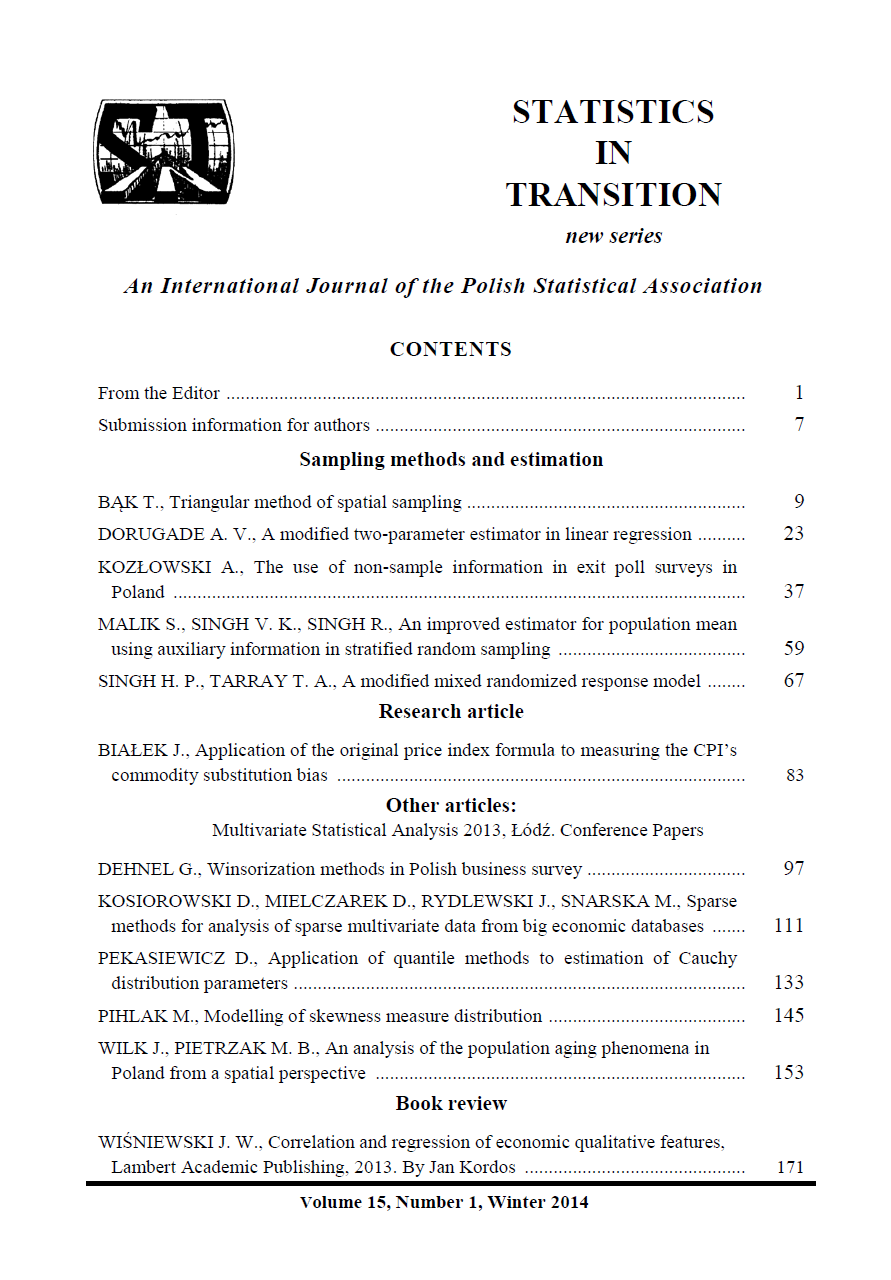ARTICLE
ABSTRACT
In this paper a new adaptive method of spatial sampling - a triangular method of spatial sampling is presented. The theory of this method is developed. Benefits of decreased size of a sample, when this method is used, are discussed. Initial sampling of the first three elements is described and density of sampling at the initial stage is obtained by Monte Carlo method. The density is defined on the basis of the logarithm of inverse square of the Euclidean distance function. Simulation of the triangular method of spatial sampling is conducted. An example is research on a forest. The aim of this research is to approximate the ability of trees to absorb carbon dioxide. In this example the triangular method of spatial sampling is used at the strata sampling stage. Density of sampling in the simulated forest is obtained using Monte Carlo method.
KEYWORDS
adaptive sampling, spatial sampling, stratified sampling, research on a forest, minimizing costs of sampling
REFERENCES
ANSELIN, L., (1980). Estimation methods for spatial autoregressive structures, Regional Science Dissertation & Monograph Series, Program in Urban and Regional Studies, Cornell University 8, p. 273.
Agriculture, Fisheries and Conservation Department – Conservation Branch:Measurement of Diameter at Breast Height (DBH), Nature Conservation Practice Note No. 02, 2006.
BĄK, T., Udział lasów w procesie redukcji CO2 – aspekty ekonomiczne (Economic aspects of the share of forests in reduction of CO2), Zeszyty naukowe konferencji PITWIN 2/2012, p. 17–21.
FATTORINI, L., (2006). Applying the Horvitz_Thompson criterion in complex designs: a computerintensive perspective for estimating inclusion probabilities, Biometrika 93, p. 269–278.
FATTORINI, L., MARCHESELLI, M., PISANI, C., (2006). A three-phase sampling strategy for large-scale multiresource forest inventories, Journal of Agricultural, Biological, and Environmental Statistics, s. 296–316.
THOMPSON, S., SEBER, G., (1996). Adaptive Sampling, John Wiley & Sons, Inc
